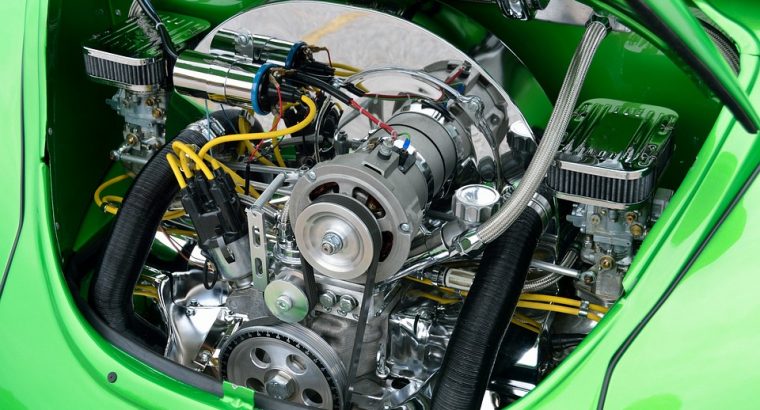Volkswagen Beetle engine conversions!
The Volkswagen Beetle
Manufactured from 1938 to 2003, with over 21 million examples manufactured, the Volkswagen Beetle is one of the most iconic cars ever produced. Commissioned by Adolf Hitler, the Beetle was sought to be an affordable, cheap, mass-produced car for use on Germany’s developing road network. In modern times, despite the large number built, Beetles in good condition are often hard to find in Australia. Furthermore, throughout its life the engine output never exceeded 60 bhp, hence making the car quite slow in comparison to modern vehicles. As a result, it has been becoming a trend that tuners will take unloved Volkswagen Beetles, giving them a second life by completing engine conversions with much more powerful units.

What is a ‘Flat’ Engine?
Early Volkswagen models are known for using air-cooled ‘flat’ engines. It was the influence of Ferdinand Porsche that these engines were used as a result of them already being developed for the early model Porsches. The flat engine configuration provided greater simplicity to the Beetle, which was a major design goal of the project. Unlike conventional combustion engines, the layout a flat variation consists of two banks of horizontally opposed pistons operating a single crankshaft. Here is an insightful video of how a flat engine operates.
There are a number of benefits to using this configuration. The first major benefit is the increase in handling the engine provides to a car. In simple terms, the geometry of the engine block decreases the centre of gravity, hence the body roll of the car also reduces. This allows the engine to be used in compact power-trains where the wheels driven are nearest to the engine. Secondly, the vibrations in a flat engine are significantly less than a conventional v-engine. Due to the sideways movement of the pistons, the vibrations caused by the combustion and reciprocation are cancelled out. In a v-engine, damping and counterweight systems would need to be applied to achieve the vibration level that a flat engine possesses.

In recent times, companies have started to stray away from flat engines in favour of more economical layouts. Still, there are two high profile models that will be using the flat engine for the foreseeable future. Those two models are the Porsche 911 and Subaru WRX. Both these engines have been developed for modern use and to maximise the benefits (as mentioned above) that the flat layout provides. Therefore it is no surprise that when the engine of a Volkswagen Beetle is converted, it is often one of these two modern engines that finds a new home in the rear of the car.
Converting Your Beetle Engine
Undertaking an engine conversion can be a big task. Because the car was only ever built to possess less than 60 bhp, by only putting in a 200+ bhp engine would turn it into a death trap. User Swaptasic from Engine Swap Depot posted last year a summary of his Volkswagen Beetle engine conversion to a Subaru 2.0 EJ20G. For this 1971 model Beetle, the Japanese engine would increase the power to over six times more than the original. Therefore the transmission and clutch units had to be custom built to be able to handle such a large increase in power. As can be seen at the bottom of Swaptastic’s post, there were lots of upgrades required.

On the other hand though, you could disregard everything I discussed previously and throw in a Chevy block! Of course this would need to be placed in the front compartment as there is no chance it will fit in the rear engine bay. Trevor Freeman from Generation High Output spotted a Chevy block conversion in 2014. He states that it was either a 305 or 308 V8 installed by the owner with the original engine bay housing the radiator and cooling fan. I would have no idea how this would drive, but for a car that was designed around the benefits of a flat-four engine, I would be very surprised if it is enjoyable to drive. My guess is that this outrageous conversion is more so just to show-off on car days.
Like this post? Read more on the Part Hunter blog here. Or maybe you could find a VW Beetle in our project listings.
You must be logged in to post a comment.
